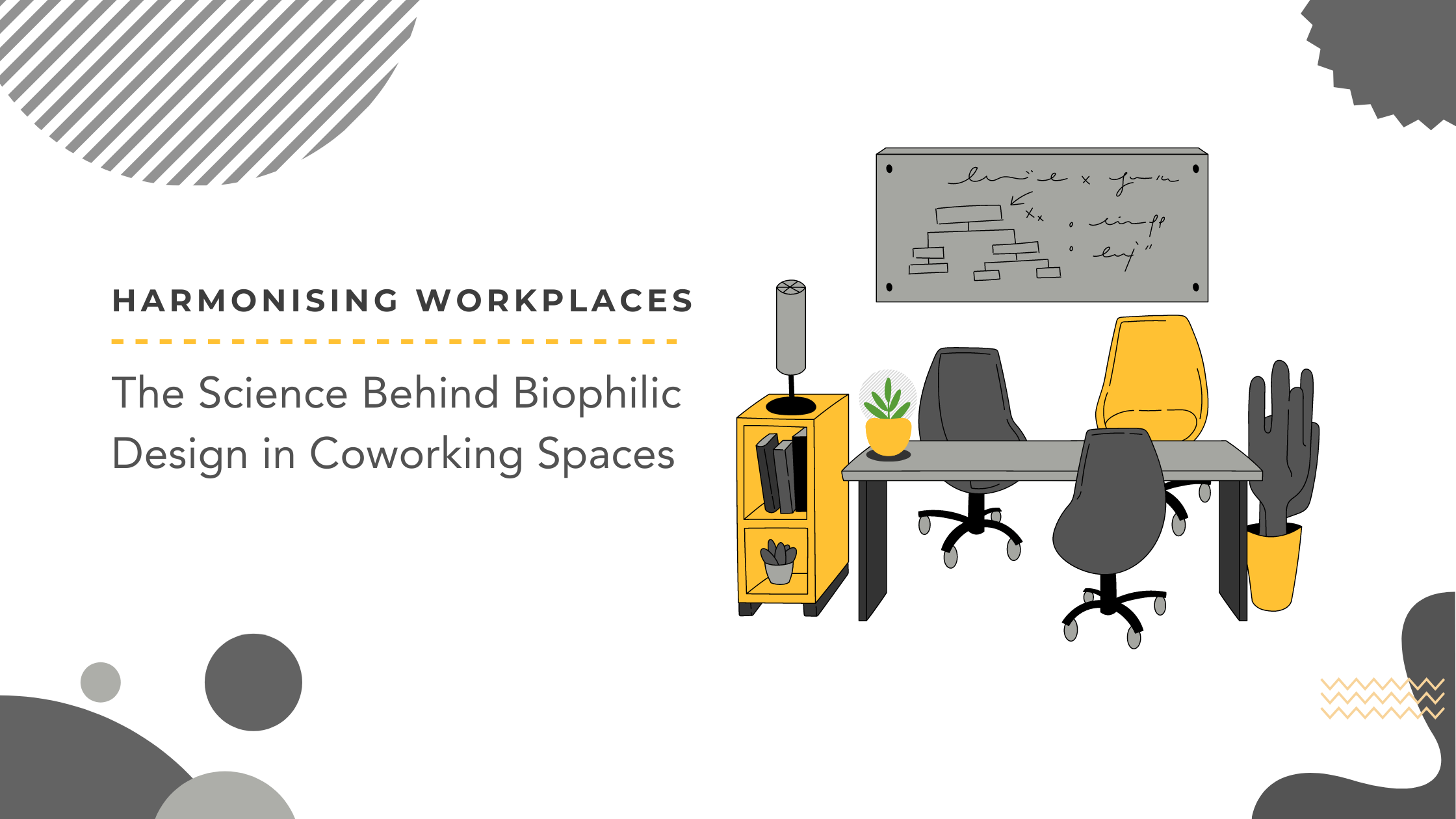Traditional 9-to-5 workplaces are fast becoming a thing of the past as we navigate the post-COVID era.
While startups consider how to get off to a good start, older businesses are looking into ways to increase efficiency and implement long-term cost savings. Furthermore, company executives are taking the lead in rethinking their working arrangements. No surprise, coworking spaces are emerging as a strong workplace option that provides great value to businesses.
Shared coworking spaces may help workers stay productive by providing working flexibility and facilities that promote focused work. Furthermore, the technologically advanced and secure environment reduces the chance of data breaches.
What's the coolest part? Coworking improves business culture and employee bonding. According to coworking statistics, these are the most important factors for a successful business.
The Great Resignation demonstrates how critical a pleasant work environment is to working professionals. In fact, 70% of professionals want to work in an environment that supports their professional ambitions. Because coworking provides a collaborative workspace, workers have several chances for career advancement.
What else? According to research, the demand for coworking increased by 41% between the first and second quarters of 2021. All of these factors demonstrate that coworking is here to stay.
How Did Coworking Fare Prior to the Pandemic?
Prior to the epidemic, the working pattern was relatively cautious. Even business leaders adhered to the standard 9-to-5 office schedule.
In fact, a large majority of businessmen saw coworking facilities as noisy and distracting. Several fallacies about coworking, such as it being hazardous, costly, and full of distractions, led to its stagnancy.
However, the success of coworking firms like Instagram, Uber, and Spotify has debunked these beliefs. However, before the epidemic, a substantial community of businesses, particularly large-scale firms, avoided coworking. This is reflected in the coworking industry's trends and statistics.
COVID-19's global onset impacted enterprises of all sizes - small, medium, and large. Coworking was no exception. However, the epidemic ushered in a new way of working.
People began to prioritize work-life balance. Coworking arose as a result of the increased demand for flexibility in workspaces and collaborative work environments.
Coworking spaces have transformed from talkative social gathering places to meaningful and productive locations. No surprise, the coworking market has grown rapidly since the outbreak.
The Current State of Coworking
The majority of coworking spaces are witnessing a tremendous revival. In reality, leading coworking organizations are transitioning from traditional work settings to coworking.
The following are the main types of coworking layouts they prefer:
Shared workspaces and flexi desks
Private office area with sound-masking technology
Office meeting spaces are designated for collaborative tasks
Work-from-home positions will remain popular, according to a recent coworking survey, but coworking will not lose its value.
Here’s why:
Demographics of Coworking Spaces: According to coworking data, it is suitable for all sorts of employees, including remote teams, freelancers, digital nomads, big, medium, and small firms, also entrepreneurs.
The Average Cost of Coworking Space: The average cost of coworking space is substantially lower than that of regular offices. Companies do not want to be burdened by long-term, costly lock-in leases. This coworking truth is true, particularly for SMBs concerned with "company financial flow." The current market penetration of coworking workplaces corroborates this.
Biggest Coworking Companies: Most industrial firms, from Mitsubishi Power to Amazon to GE Healthcare, have shifted to coworking after weighing the long-term benefits. Furthermore, small and medium-sized enterprises are seeking for the world's greatest coworking spaces.
What Does the Future Hold for Indian Coworking Spaces?
India is quickly becoming a hotspot for cutting-edge coworking spaces.
According to coworking space statistics, India is one of the top 20 coworking countries in the world. The coworking movement that originated in urban and metro areas in India may spread to Tier 2 and Tier 3 cities. Coworking culture is currently prevalent in major cities such as Mumbai, Delhi, and Bengaluru.
Next, the most significant component of Indian shared spaces would be a technologically driven atmosphere. Voice tech systems, autonomous sanitizing solutions, air-improving systems, sensor-led switches, and other technologies will be available in the Flex Offices.
Another significant coworking theme is sustainability.
To reduce their carbon footprints, Indian coworking companies are implementing initiatives such as green workplaces. Several businesses have installed solar panels to cut energy use.
In conclusion, coworking spaces in India have a promising future. This will result in a significant shift in Indian workplace culture.
What Is Driving Coworking Demand?
Aside from facilities and infrastructure, the millennial workforce is a major driver of the coworking boom. Young entrepreneurs that use shared workplaces have less duties to deal with. For example, the building owner oversees operations such as office cleaning and sanitization. These aspects are not the responsibility of coworking enterprises.
What else? Long-term leases are not required for business owners. This allows them to concentrate on their business without having to worry about large lease payments.
Furthermore, the community of like-minded experts might help businesses seeking business partnerships. It's a win-win situation for everyone.
F.A.Q. : Coworking Spaces
1. How do you find a coworking space?
A coworking space is a shared business concept in which professionals gather in a neutral work environment to work on various projects independently. It enables various businesses and working individuals to network and engage with others in the field, exchanging expertise and exploring new ideas.
This type of agreement enables firms to cut expenses while also improving the working environment for their employees.
2. What are the advantages of co-working?
Here are the top advantages of coworking.
Infrastructure and facilities that are inexpensive
Employee productivity has increased.
Opportunities for Networking and Collaboration
Work schedule flexibility
3. What is included in a coworking space?
Coworking spaces are basically shared workstations for professionals who want to avoid the solitude and distractions of working from home or a coffee shop. They provide ergonomic workstations, private conference spaces, cost-effective tools and equipment, functioning kitchens, utilities, reception, and other services.
Furthermore, they provide a network of freelancers, entrepreneurs, and startups to anybody wishing to make industry contacts.
4. How can a company find the most suitable coworking space?
Business owners should think about things like workspace location, cost, business needs, and neighboring businesses. This method can assist them in analyzing and selecting the best coworking space.
5. What are the top three challenges of working in a coworking environment?
The following are the top three coworking challenges.
Distractions and noise
Conflict in a shared space
Inadequate privacy
Businesses, on the other hand, can overcome these coworking issues by partnering with a reputable shared space service provider.
6. What is the average cost of a coworking space?
The average cost of a coworking space across the globe is between 130 and 288 USD.
Conclusion
Many investors are interested in this area. Many international behemoths, such as Wework, are also spreading their footprint in our country, which is why more young people are choosing entrepreneurship as a career path. Pacing their expansion into tier-2 and tier-3 cities will be critical, since places such as Ahmedabad, Pune, and Vijayawada are gradually becoming startup hotspots.
The next great thing is to combine coworking platforms with incubation facilities, where individuals can find funding, colleagues, and a healthy atmosphere all in one location. Currently, a coworking space rents or opens in certain cafes, so with greater penetration and lower pricing, people may gradually gravitate toward these modern workspaces. Currently valued at roughly $1 billion, this workplace sector in India might be around $7-8 billion by 2022.







